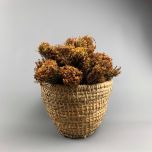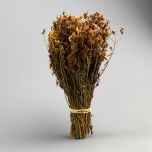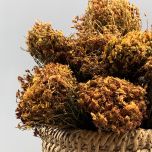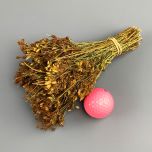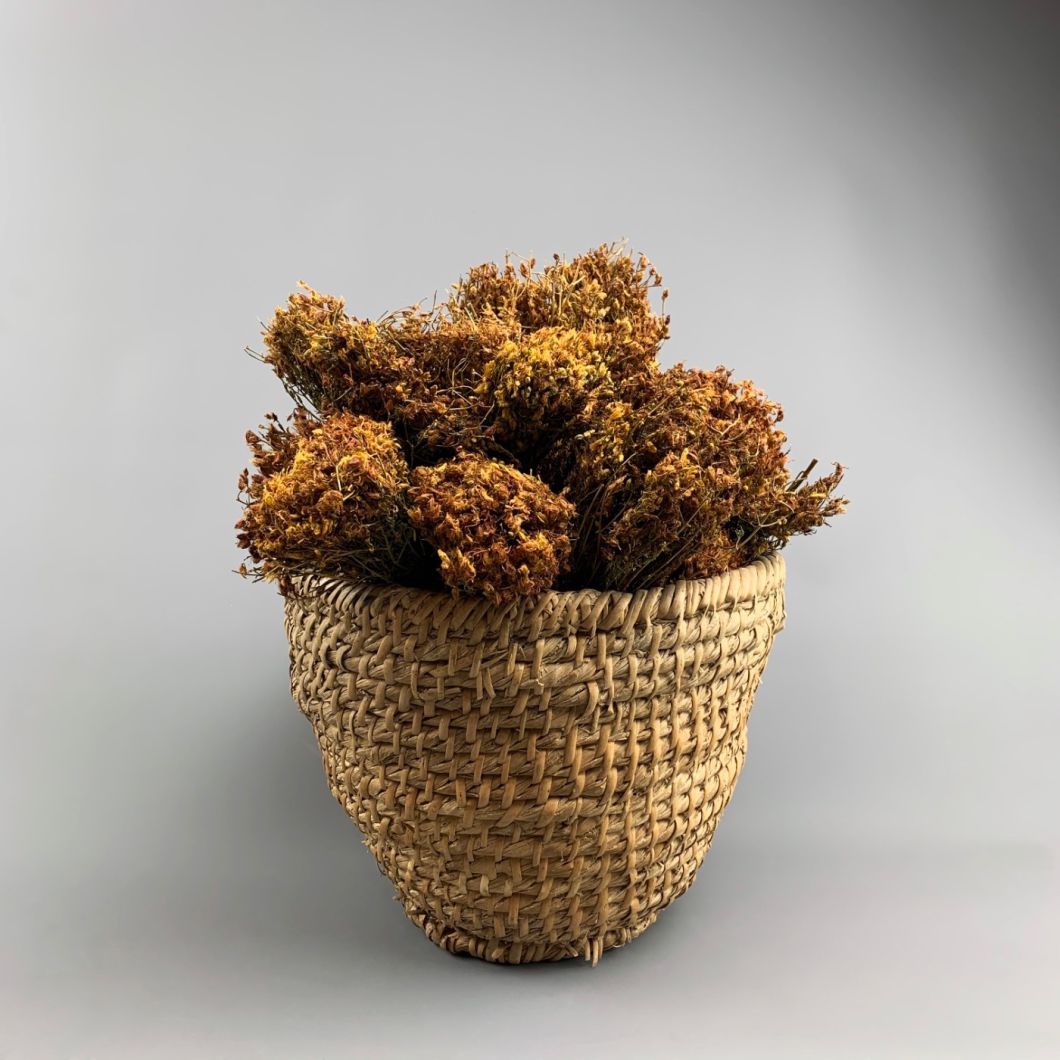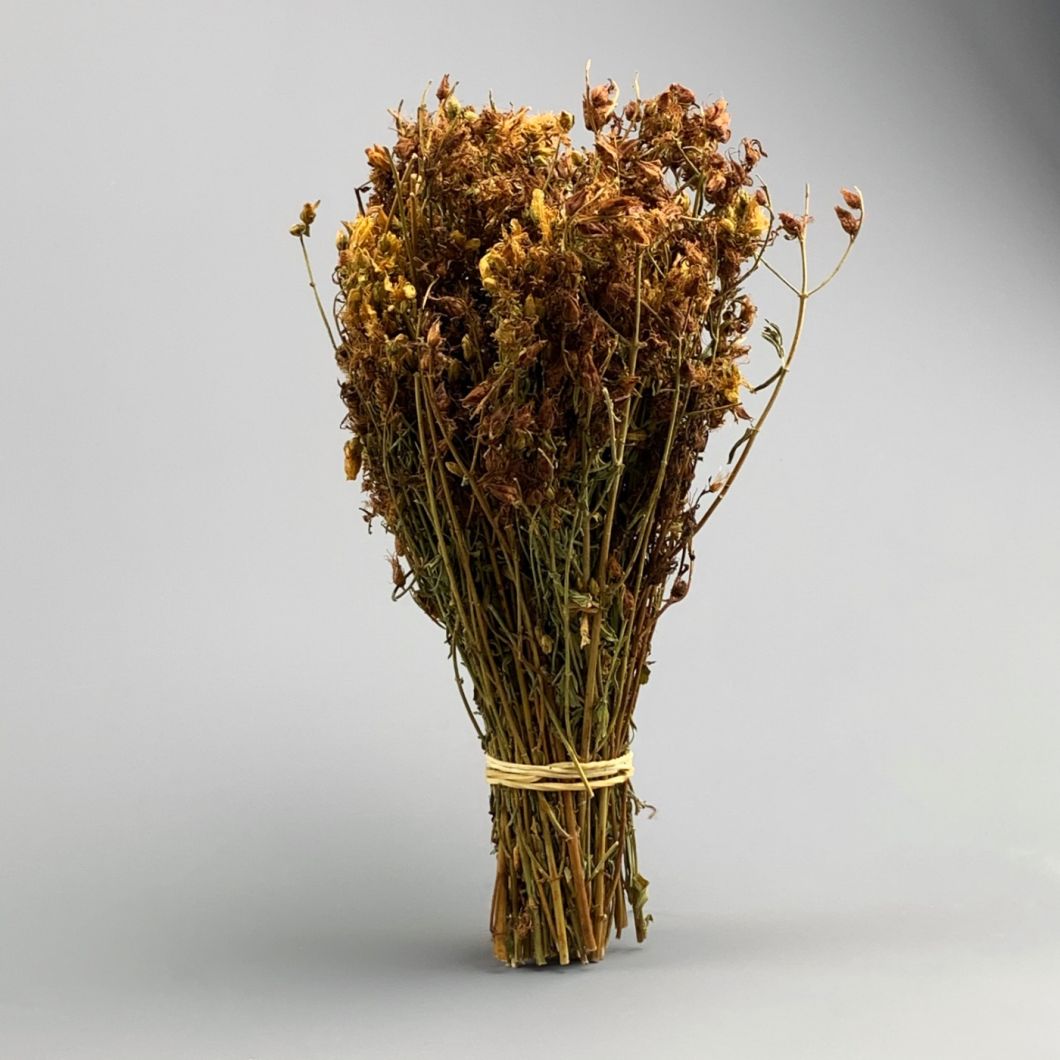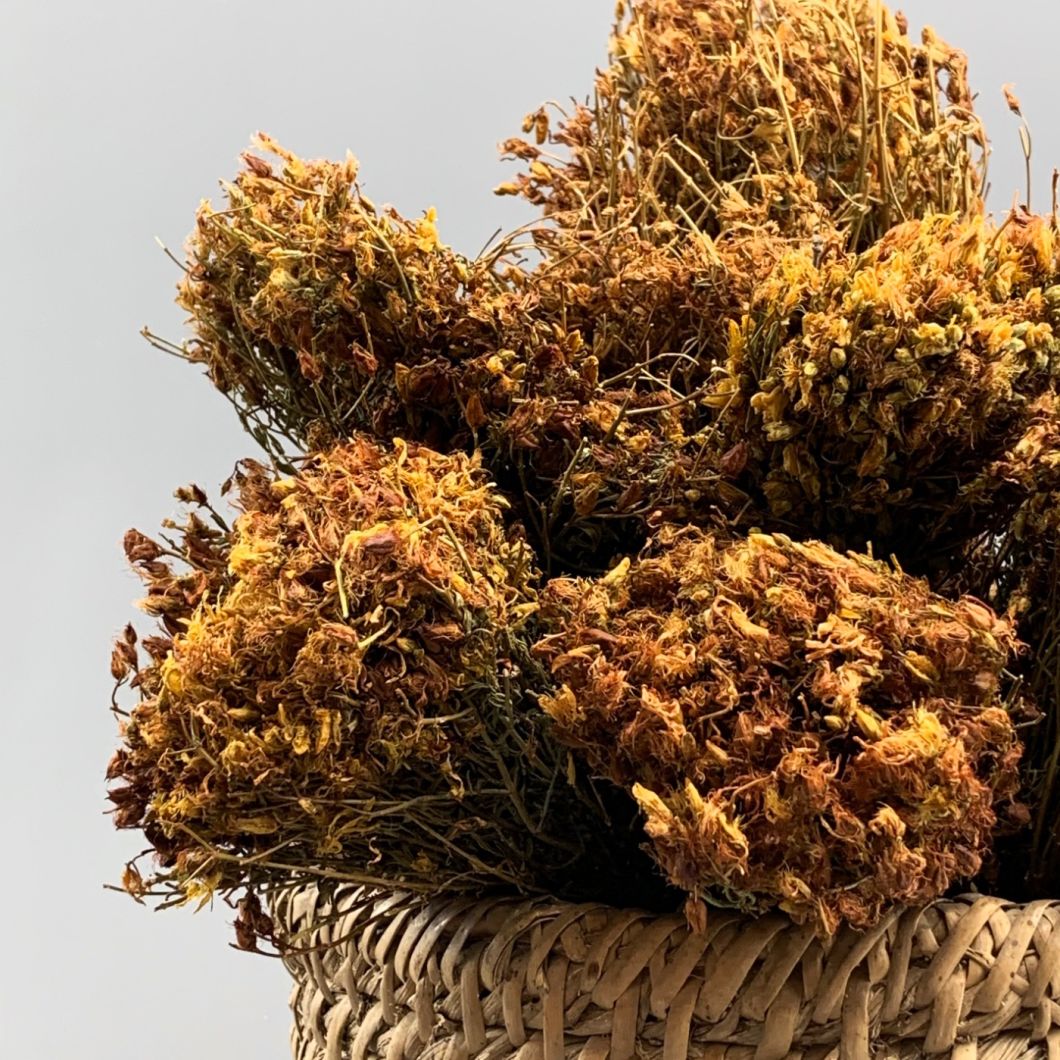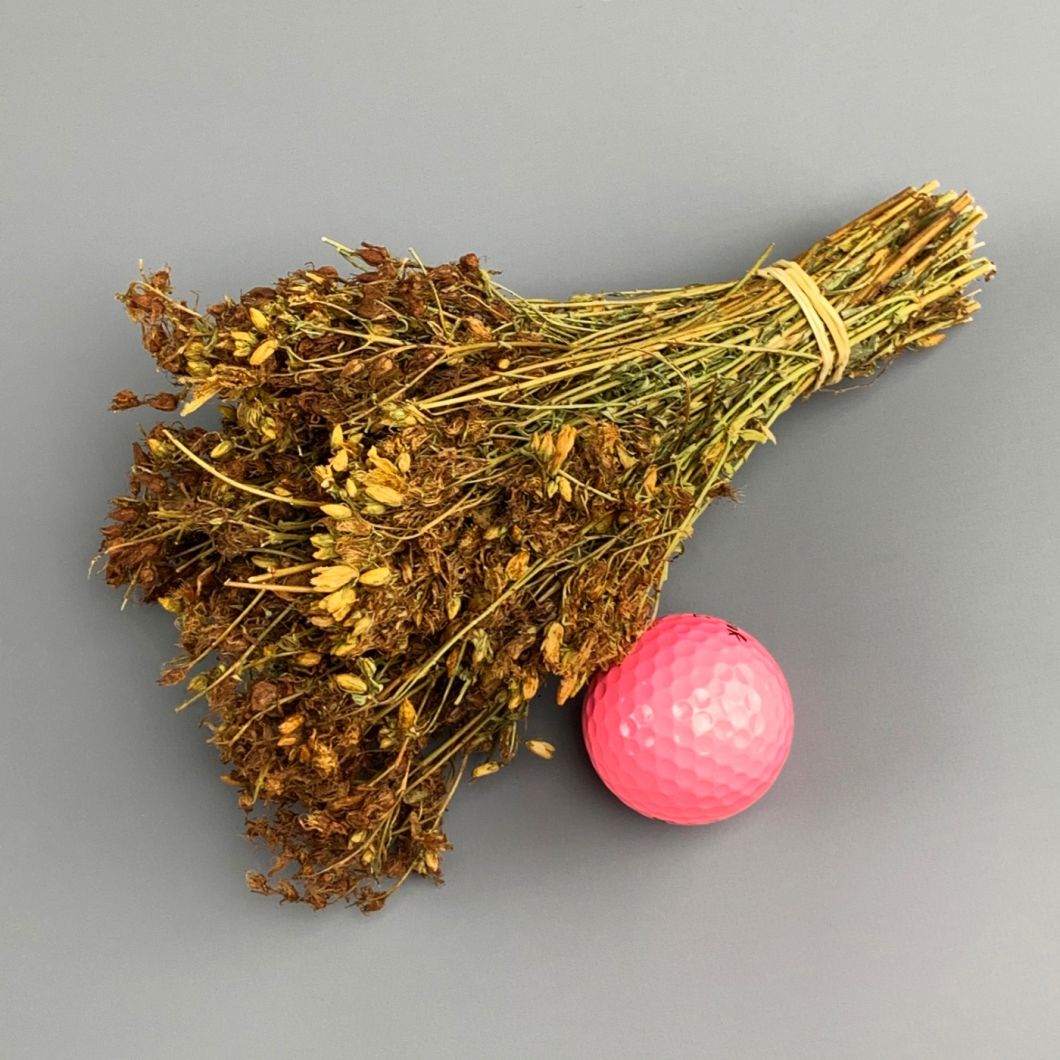Like me, you probably grew up hearing that witches and warts went together but we are wrong, it should be worts! Remember plants like St. John's Wort, or Stinkwort and you are on the right track again. Witches have been partnering with worts since time immemorial to heal themselves and their fellow humans. Worts are any plant, lichen or fungus used for healing. The old Germanic version, wyrt, morphed into today's wort and also relates to "root". Back in the day, the line between food and medicine was much more blurred and the roots gathered found themselves in everyday teas, brews, and stews. Brewers are familiar with worts as the base of their beer, a sweet grainy soup broth which serves as the growth medium for yeasts to transform sugar into alcohol. Perfect for set dressing, props, as wedding/party decor, events/exhibitions or simply as an interesting addition to a floral display in the home.
St John's Wort, also known as "Spathohorto" in northern Greece and "Valsamo" in the south, is one of nature's most significant therapeutic flowers. It has taken its name from St John's Day; 24th June, as this is the day when traditionally its flowers are picked. It makes a mild flavour reddish infusion, which can often be a tiny bit bitter, although not unpleasant, that is thought to help with relaxation, insomnia and depression. It is the perfect tea to help improve your mood and take the edge off, as well as ease symptoms of colds and flu. It has been associated with magic and sorcery for centuries due to its medicinal properties. Used for witchcraft and spells ingredients
Our herbs and traditional plants are dried and carefully stored. They can be used to dress market stalls or for 'Witch Doctors', Offerings & Talisman as well as the dark medicines and otherworldly fauna. Casting a spell needs various ingredients so we have plenty of items which will look perfect together with these as they are, or prepared, chopped & deflowered ready for the pot.
They are available in large quantities to be hanging from herb racks in the kitchen, piled up in baskets as if just collected from the woods, on stalls or over tables for the local market or magician's alley.
Sold as a bunch (15cm circumference where tied)
Each stem is approximately 25cm in length.
